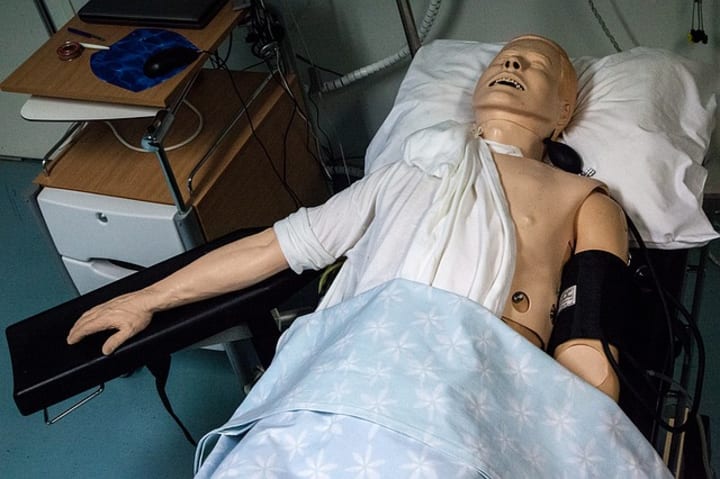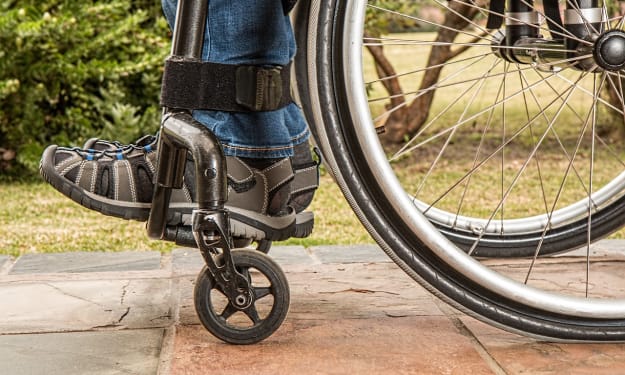
As I was traipsing about the wide and wild world of the interwbs in search of awesome stuff, I stumbled—soberly—across this little nugget. If you don’t feel like going to the original article, then shame on you, but I’ll give you a bit of info on it before we get stared anyway. Take a big breath for this next line, because it’s a doozy. “Proof of Concept of an Online EMG-based Decoding of Hand Postures and Individual Digit Forces for Prosthetic Hand Control,” written by Alicia Gailey and Marco Santello of the School of Biology and Health Systems Engineering, Arizona State University, and Panagiotis Artemiadis of the School for Engineering of Matter, Transport, and Energy, Arizona State University, is part of the closed-loop systems for next-generation neuroprostheses research topic from Frontiers in Neurology, a “Frontiers in” journal series from Frontiers.
I’m almost certain that’s 100-percent accurate, but I’d be more confident if my brain was wired to the computer. Speaking of Brain-Machine Interfaces (BMIs)…
Researchers are Looking to Improve Prosthetic Device Functions
For individuals who must utilize a prosthesis—in this case, transradial (below the elbow) or transhumeral (above the elbow)—the technology is only getting better. Overall hand and digit movement has improved greatly from the early days of the mannequin arm prosthesis.

What? He doesn’t need it.
According to the authors of “Proof of Concept…:”
Options currently available to individuals with upper limb loss range from prosthetic hands that can perform many movements, but require more cognitive effort to control, to simpler terminal devices with limited functional abilities.
Which means that, even considering the improvements to hand and arm prostheses, there is still room for growth. In an effort to increase the performance of upper limb prosthetic devices, researches are looking to BMIs for answers. But, this research may help more than amputees. Utilizing BMIs and neuroprostheses can potentially help individuals suffering from neurological disorders that affect brain-to-body connections resulting in functional impairment and/or paralysis.
Looking for Advancements
Advancing functionality for hand/arm prostheses can dramatically help the end-user. The human hand is involved in countless tasks each day and, right now, available prostheses just aren’t cutting the mustard.
That’s a horrible expression. Would up to snuff be better? No. No, I don’t think there is such a thing as a good situation during which the word “snuff” is used. Anyway, let’s take a look at the challenges that prosthetic hand developers face, as per “Proof of Concept…” authors:
One of the main remaining challenges for prosthetic hand developers is in allowing the user to reliably control many different hand movements without too much cognitive effort. Body-powered systems are reliable, but their harness system can result in fatigue and strain. Furthermore, body-powered prostheses are limited in their functionality. Control systems based on electroencephalographic (EEG) signals can be used to control prosthetic hands for above-elbow amputees and paralyzed individuals. However, the implementation of these systems tends to be challenging because EEG signals are associated with many other behaviors besides hand motion, such as proximal musculature involved in hand transport, trunk movement, and so forth. Other methods are being developed to extract signals from within the brain or peripheral nerve tissue, but such methods are invasive and expensive.
And, that’s why researchers and developers are turning to myoelectric systems. I’m not a complete dick, so here’s a brief explanation of myoelectric systems. Myoelectric systems focus on the application of myoelectric signals to control human-assisting robots or rehabilitation devices based on electromyographic (EMG) activity of residual muscles following an amputation. We’re starting to get our BMI here.

No, Dave. Wrong tool. And, wrong BMI for that matter.
The Research
The authors of “Proof of Concept…” tested the myoelectric control system on the commercially available i-limb from Touch Bionics. They sent commands wirelessly to the prosthesis in which “the integer value of the flexion command was proportional to the predicted flexion force.” The subjects, five males and three female, were all right-handed, able-bodied individuals.
We asked subjects to perform two sets of tasks. […] For both tasks, we recorded EMG signals from five surface EMG electrodes and extracted features from these signals to train a one-against-one support vector machine (SVM). This SVM was used to distinguish hand poses, and a random forest regression (RFR) was used to predict each of the five digit forces.
After this came the EMG decoder system training and testing. There’s a lot of math involved at this point, so I highly recommend you go check it out. If fact, here’s the link again. If you’re determined to stick with me, however, I thank you for your loyalty (and possibly laziness). No judgement.
A large part of this research was digit force prediction, but that alone wouldn’t be helpful. As the authors point out:
The EMG-to-force mapping for the middle finger is going to be different for a thumb-middle finger precision grasp versus a closed fist. Incorporating an SVM classifier that distinguishes between hand postures, myoelectric control of hand motion, and individual digit forces for everyday activities becomes more feasible.

Pretty sure I did something wrong here.
The Takeaway
Utilizing myoelectric systems can add an amount of dexterity that current prostheses just can’t touch. This offshoot of BMI can allow for a more responsive and realistic—in movement—hand/arm prosthesis that could allow amputees—or those individuals with partial paralysis—to function in a more natural manner without tapping into the cognitive resources that EEG-signal control systems use.
About the Creator
RJ Plant
RJ Plant is a Birmingham, AL, native currently terrorizing Williamsburg, VA. She writes sci-fi and fantasy with thriller elements and has a fantastic library, as well as a strange love for science. Want more? Visit rachaelplant.com.






Comments
There are no comments for this story
Be the first to respond and start the conversation.